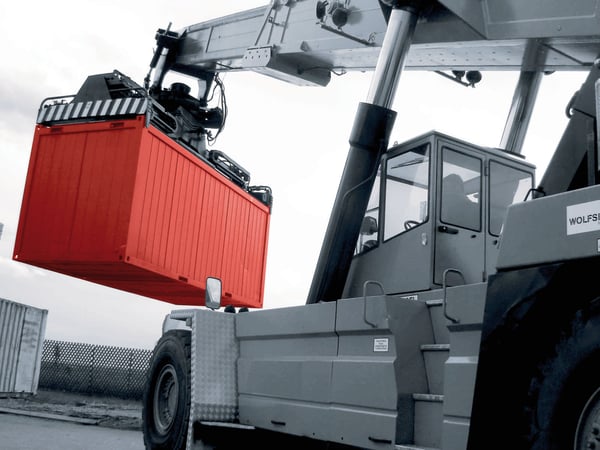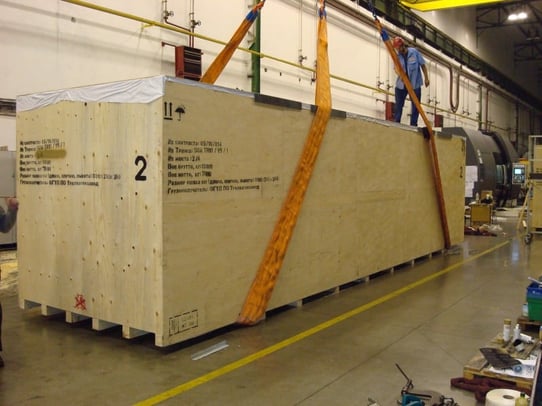Are you preparing to relocate to a new facility? Your plant relocation could have a substantial positive impact on your business in the long-run. Maybe it will give you greater capacity, more effective distribution options, or access to a larger potential workforce.
In the short-term, though, a plant relocation can be painful. You may have to shut down operations for a few days. Your production schedule could be disrupted. Your machines, equipment, or inventory could be damaged in the process. If the relocation takes longer than planned, you might miss deadlines.
Your plant relocation should be long-term driver for growth and increased profitability. Don’t let it become a drag on your operations and your bottom line.
The good news is that there are steps you can take to keep your relocation on-track and minimize its impact on your business. The bad news is that many manufacturers are fail to take these preparation steps in the lead-up to the relocation. The result is that they suffer delays, cost overruns, equipment damage, or worse.
Below are a few common mistakes that can happen in the relocation process. Do any of these sound familiar? If so, you may want to take action before it’s too late. The following mistakes have the potential to derail your relocation and hurt your business.
1. Not using a detailed layout of the new facility to plan the move.
You may have a general idea of where things should be located in the new facility. For example, maybe you know where certain machines will be placed or where inventory racks should be installed.
However, having a general idea or even a high-level plan may not be enough. As you start installing machinery and equipment into the new facility, you could discover that you overlooked important details. Perhaps there are aren’t enough outlets and power sources in the area where you planned on installing a machine. Maybe you need increased ventilation in certain areas. Perhaps your general plans didn’t leave enough space for forklifts or other machinery.
All of these issues can be avoided with a highly-detailed layout of the new facility. Create a sketch that includes exact measurements and important features, like outlets, docks, vents, and more. Then plot the location of equipment and machinery on the layout. That way you can see in advance whether you’re missing any important details.
2. Using an overly-broad schedule.
Just as your relocation layout should be detailed, so too should your schedule. Some manufacturers make the mistake of simply scheduling the days that the relocation will take place. Others may take it a step further and broadly classify that certain departments will move on certain days.
Ideally, your schedule should drill down even deeper. Go beyond simply scheduling departments. Instead, detail which machines or blocks of inventory will be loaded onto which trucks at specific times. Designate a specific order of packing and unpacking.
The benefit of a detailed schedule is that it helps you see whether you’re on track. You can quickly make changes if you think you’ve fallen behind. You also may be able to develop a schedule and process that allows you to continue some level of operations even while the relocation is underway.
3. Failing to log inventory and equipment parts and conditions.
Assume the relocation is nearly complete and you’re touring the new facility. As you look over your equipment, you notice one machine has suffered damage. Perhaps a part is missing or an important component is broken. When did it happen? How did it occur?
One great way to answer those questions is to prepare a log of all equipment and inventory before the relocation starts. Be sure to inspect machinery and note their condition and any damage that exists. If there is new damage after the relocation, you’ll know that it occurred while they machine was being moved. You can then touch base with those who moved that piece to find out what happened and who should be held responsible.
4. Not providing written, detailed instructions to contract workers.
It’s possible that you may be using contract workers to handle your relocation. They may not be familiar with your equipment or inventory and it’s also safe to assume that they won’t have a detailed understanding of your facility. That lack of understanding can cause delays. When they’re confused about where to place items, they may look for direction. If there’s no one around to provide that direction, the workers could simply wait.
Instead, provide them with detailed instructions about where to place equipment and machinery, how to disassemble and reassemble items, how to handle fragile materials, and more. The more information you can provide, the less questions they will have. That means they’ll spend less time looking for guidance and more time getting the job done.
5. Not having a written relocation plan.
You can tackle all of these issues by developing a written relocation plan. Your relocation plan includes layouts of the facilities, a detailed schedule, equipment logs, instructions, and much more. It’s the guiding document for keeping your relocation on-schedule and under budget.
Of course, if you’ve never managed a relocation before, you may not know how to create a written plan. You may want to partner with a company that can consult on your plant relocation. They can help you develop a plan and they can even manage the process. That allows you to focus on your business and your most important objectives.
Your plant relocation should be long-term driver for growth and increased profitability. Don’t let it become a drag on your operations and your bottom line. Develop a detailed relocation plan to guide the process. ![]()









Let Us Know What You Thought about this Post.
Put your Comment Below.